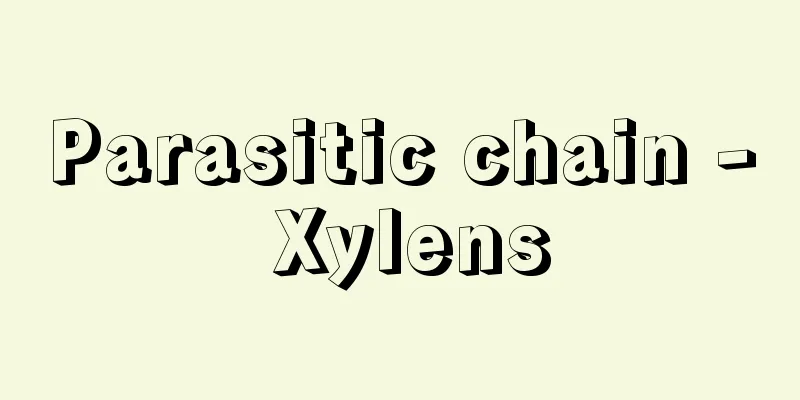Introduction to Experimental Medicine

|
A work by French physiologist C. Bernard. Published in 1865. The original title is Introduction à l'étude de la médecine expérimentale. Along with R.L.C. Virchow's "Cellular Pathology" and C. Darwin's "On the Origin of Species," it is one of the important classics of medicine and biology in the 19th century. It consists of three parts: "Experimental Reasoning," "Experiments in Living Things," and "Application of the Experimental Method to the Study of Life Phenomena." In the first part, he states that an experiment is a dialogue between the scientist and nature. Observed facts give rise to a concept (hypothesis), which is then inferred and experimented upon, and the results are observed to revise the hypothesis. He states that the purpose of science is to elucidate the conditions (causes) that cause phenomena through such a procedure. In the second part, he states that the order of causality (determinism) exists in the world of living things as well as in non-living things. He states that the physiological and pathological conditions of humans and higher animals are complex, and that careful consideration must be given to the internal environment surrounding the cells, but ultimately, the phenomena of living organisms are also determined by physical and chemical conditions. In the third part, he reminisces about his achievements, such as the fat digestive function of pancreatic juice and the synthesis of glycogen in the liver, to support the first and second parts. He also argues that pathology and therapeutics must be based on experimental determinism, not on experience. This book had a great influence on the French intellectual world, inspiring E. Zola's naturalistic novels as one example. Heinrich Bergson considered this book to be on a par with Descartes' Discourse on the Method. [Akira Kajita] "Introduction to Experimental Medicine" translated by Taiei Miura (1961, Tokyo Sogensha) [References] |Source: Shogakukan Encyclopedia Nipponica About Encyclopedia Nipponica Information | Legend |
|
フランスの生理学者C・ベルナールの著作。1865年刊。原題はIntroduction à l'étude de la médecine expérimentale。R・L・C・ウィルヒョウの『細胞病理学』、C・ダーウィン『種の起原』とともに、19世紀の医学・生物学の重要な古典の一つ。「実験的推理」「生物における実験」「生命現象の研究に対する実験的方法の応用」の3部からなっている。 第1部では、実験は科学者と自然との間に行われる対話である。観察された事実が構想(仮説)を生み、この構想のうえに推理し実験し、その結果を観察して仮説を修正する。こういう手続によって現象のおこる条件(原因)を解明することが科学の目的であるとし、第2部では、因果の秩序(デテルミニスム)は、無生物におけると同じように生物の世界にも成り立っている。ヒトや高等動物の生理・病理の条件は複雑であり、とくに、細胞を取り巻く内界(内部環境)への十分な顧慮が必要であるが、終局的には、生体の現象も物理・化学的な諸条件に帰着する、と述べ、第3部では、膵液(すいえき)の脂肪消化作用、肝臓のグリコーゲン生合成など、彼の業績が、第1、第2部の裏づけとして追想される。さらに、病理学、治療学が、経験ではなく、実験的デテルミニスムを基礎としなければならない、と説く。 本書はフランスの思想界に大きな影響を与え、その一つとしてE・ゾラの自然主義小説を生んだ。H・ベルクソンは、本書をデカルトの『方法序説』に並ぶものとした。 [梶田 昭] 『三浦岱栄訳『実験医学序説』(1961・東京創元社)』 [参照項目] |出典 小学館 日本大百科全書(ニッポニカ)日本大百科全書(ニッポニカ)について 情報 | 凡例 |
Recommend
nirvana (English spelling)
…The karmic body emits six levels of imperceptibl...
Sedum makinoi (English spelling) Sedummakinoi
… [Hiroshi Yuasa]. … *Some of the terminology tha...
Katsura Ken
...Suzhou and Hangzhou were managed by Sun Long, ...
Military aid - Gunjienjo (English spelling)
In a broad sense, it refers to any military assis...
Seiganji Temple
Located in Sakurano-cho, Shinkyogoku, Nakagyo War...
Olivine dolerite - Olivine dolerite
…Brown hornblende and biotite are rarely found in...
Atsushi Nakajima
Novelist. Born in Tokyo on May 5, 1909. The Nakaj...
Knowledge Science (English spelling)
The study of knowledge is based on the metaphysics...
cytological map
...Therefore, this map is also called a linkage m...
Verdelot, P. (English spelling) VerdelotP
...Compared to other Italian secular songs of the...
Tar sand
…Oil sands, also called tar sands, are sand or sa...
Meishuya - famous sake shop
Generally speaking, the term "meishu-ya"...
Aokata
A surname. A powerful clan based on Nakadori Islan...
Full employment output - full employment output
…It is believed that real income in a national ec...
Vauxhall-Gardens (English spelling) VauxhallGardens
… [Europe, America] Its origins can be traced bac...









